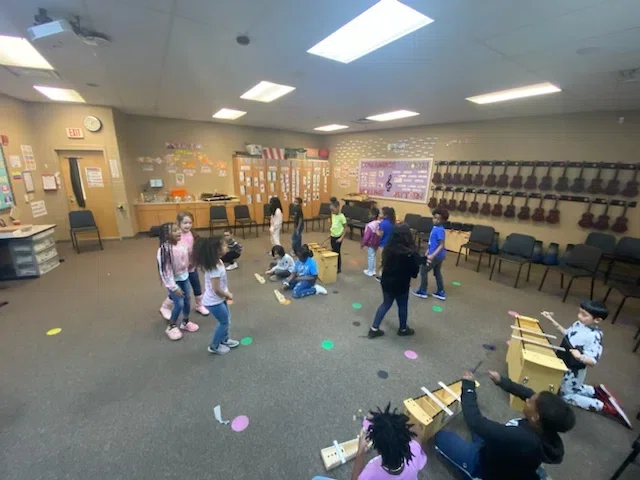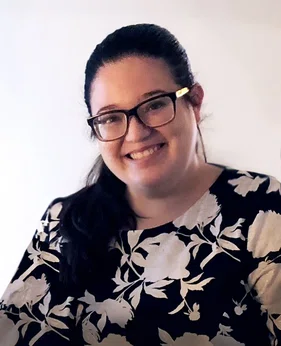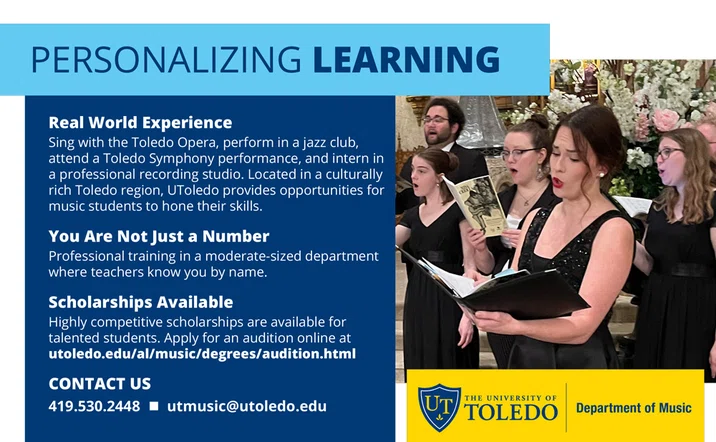©2023 Ohio Music Education Association



FEATURED ARTICLES
Fostering Well-Being in Elementary General Music
Fostering Well-Being in Elementary General Music
Lisa Gruenhagen and Anna McClure


Lisa Gruenhagen, PhD, Bowling Green State University

Anna McClure, David Hill CLC, Akron Public Schools
General music education, if practiced with intentionality, has the potential to be a passionate act of hope with tremendous implications for the academic, social, and emotional needs of students. General music specialists have the capacity to expose students to the very best parts of life itself: joy, playfulness, respect, gratitude, creativity, persistence, resilience, curiosity, and so much more (Varner, 2023, p. 34).

Well-being and social-emotional learning are topics of increasing focus. As social anxiety has grown over the past few years, the importance of well-being and positive social and emotional learning has never been greater, for both students and teachers. Researchers report that “many educators feel it is essential to prioritize the physiological, safety, and relationship needs” of students so that they will be better prepared to focus on learning (Raschdorf et al., 2021, p. 44). Designing learning environments where teachers and students feel safe and supported both emotionally and socially is crucial. Through our discussions over the past year, we found a shared need to disengage at times from the daily routines of our classrooms to focus on joyful, playful musicking with our students and replenish our well-being.
Well-Being Defined
Well-Being Defined
Well-being is often defined as “a state of being comfortable, healthy, or happy” (Oxford Languages, n.d.) and includes the interdependent dimensions of physical, emotional, and social well-being. Engaging with music can have a profound effect on all three dimensions: (a) Physical well-being. Music motivates us to be physically active and can improve general physical ability. Movement can help to reduce muscle tension and improve coordination. Findings from research show that music can also positively affect neurochemicals in the body with two areas of benefit: a boost to the immune system and the reduction of stress (Chandra & Levitin, 2013); (b) Emotional well-being. As musicians and teachers, we know that music can evoke a wide variety of strong emotions including joy, sadness, fear, and calm. Researchers suggest that music can activate the release of endorphins helping to elevate mood and create a feeling of well-being (Grape at al., 2003); (c) Social well-being. Actively engaging with and participating in music can result in increased social bonds and more positive attitudes in children (Hallam, 2010). Engaging in collaborative music making can help children see that together they can create and experience something special that couldn’t be done alone – dynamic social experiences can foster self-esteem and build confidence, promoting a sense of healthy social well-being.
Social and Emotional Learning (SEL)
Social and Emotional Learning (SEL)
The Collaborative for Academic, Social, and Emotional Learning (CASEL) is committed to evidence-based social and emotional learning (SEL) that supports learning and development. They define SEL as:
The process through which all young people and adults acquire and apply the knowledge, skills, and attitudes to develop healthy identities, manage emotions and achieve personal and collective goals, feel and show empathy for others, establish and maintain supportive relationships, and make responsible and caring decisions (casel.org).
Because learning is a social experience, the development of social and emotional skills is fostered through positive interactions and relationships. Engagement in music activities nurtures the development of social and emotional skills “by encouraging students to collaborate, self-regulate, show empathy toward others, and engage in critical thinking and problem-solving” (Raschdorf et al., 2021, p. 43). These skills can be learned through specifically planned lessons and through playful, joyful, game-like musical experiences that are low-risk and non-graded, and naturally foster understanding of musical concepts and the development of musical skills. These activities might include hand-clapping games, singing games, body rondos, structured and creative movement, folk and line dancing, and playing in ensembles.
Engaging in Reflective Practice to Foster Well-Being
Engaging in Reflective Practice to Foster Well-Being
Because well-being looks and feels differently for everyone, here are some reflection questions that can help you develop an understanding of the types of activities you could benefit from having in your toolbox.
- When do I feel joyful in the classroom?
- When do I feel stressed in the classroom?
- What games or activities do I already enjoy doing the most?
- Do the students like this type of game/activity?
- Do I like this type of game/activity?
- Will I have fun participating in this game/activity?
- Can this game/activity be quickly taught or engaged with?
- Does this game/activity have replay value for both me and my students?
- Does this game/activity allow students to participate with different levels of comfort?
- Does this game/activity allow everyone to participate for long periods of time?
- How much set up or preparation of materials do I need to allow this game/activity to be impromptu throughout the year?
When reflecting on your personal social, emotional, and physical well-being, where can your well-being be enhanced in your music room? Teachers who want to enhance their social well-being and connection with their students might include activities that focus on their ability to participate in the community of musicking in the classroom. To enhance emotional well-being, teachers might benefit from including listening activities of music they enjoy while connecting them to reflection questions about the music or drawing their impressions of the music during active listening. Including popular line dances might benefit teachers who seek to enhance their physical well-being in their classroom. In his article “SEL, Mindfulness, and the Art of General Music Education” Varner (2023) advises that “it is time to rediscover the importance of music, art, and fun as techniques for better access to education and wellness” (p. 36). Let the answers to the above questions be the driving force for choosing activities that foster your personal well-being and that of your students
References
- Chanda, M. L., & Levitin, D. J. (2013). The neurochemistry of music. Trends in cognitive sciences, 17(4), 179–193. https://doi.org/10.1016/j.tics.2013.02.007
- Collaborative for Academic, Social, and Emotional Learning. (2024). Fundamentals of SEL. https://casel.org/fundamentals-of-sel/
- Grape, C., Sandgren, M., Hansson, L.O., Ericson, M., & Theorell, T. (2002). Does singing promote well-being? An empirical study of professional and amateur singers during a singing lesson. Integrative Physiological & Behavioral Science, 38(1), 65–74. https://doi.org/10.1007/BF02734261
- Hallam, S. (2010). The power of music: Its impact on the intellectual, social and personal development of children and young people. International Journal of Music Education, 28(3), 269-289. https://doi.org/10.1177/0255761410370658
- Raschdorf, T., May, B. N., & Searcy, A. (2021). Integrating Social-Emotional Learning Into Our “New Normal” Teaching Elementary General Music. General Music Today, 34(2), 42-48. https://doi.org/10.1177/1048371320961372
- Varner, E. (2023). SEL, Mindfulness, and the Art of General Music Education. Journal of General Music Education, 36(2), 34-37. https://doi.org/10.1177/27527646221130320
Lisa Gruenhagen, PhD is on the music education faculty of Bowling Green State University where she teaches undergraduate and graduate courses and is the area coordinator for general music. She completed Orff Levels at the Eastman School of Music.
Anna McClure, MM is on the faculty at David Hill CLC, Akron Public Schools, where she teaches K-5 general music along with beginning band and orchestra. She completed Orff Level I at Kent State University.
SHARE ARTICLE:



